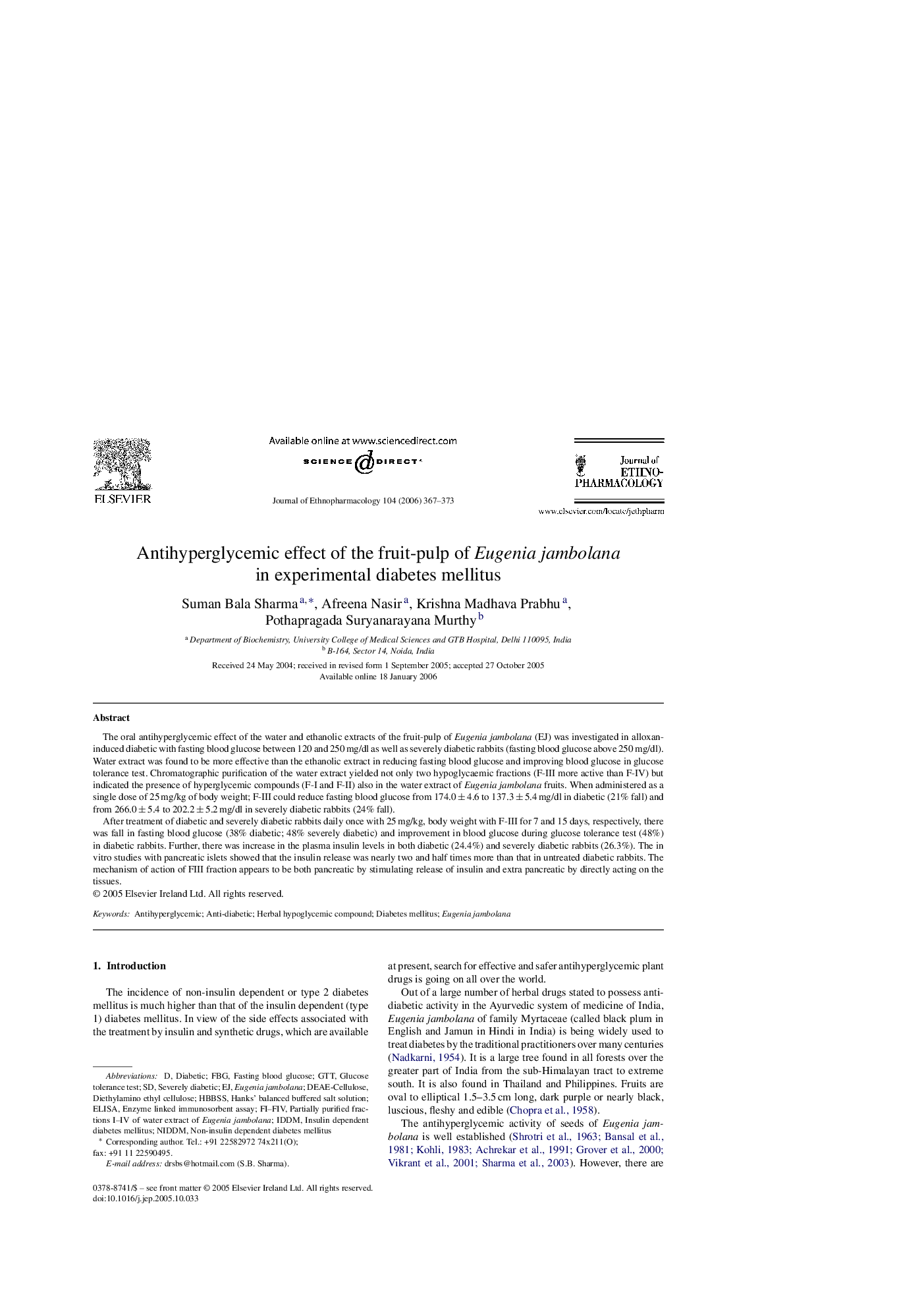| Article ID | Journal | Published Year | Pages | File Type |
|---|---|---|---|---|
| 2547833 | Journal of Ethnopharmacology | 2006 | 7 Pages |
The oral antihyperglycemic effect of the water and ethanolic extracts of the fruit-pulp of Eugenia jambolana (EJ) was investigated in alloxan-induced diabetic with fasting blood glucose between 120 and 250 mg/dl as well as severely diabetic rabbits (fasting blood glucose above 250 mg/dl). Water extract was found to be more effective than the ethanolic extract in reducing fasting blood glucose and improving blood glucose in glucose tolerance test. Chromatographic purification of the water extract yielded not only two hypoglycaemic fractions (F-III more active than F-IV) but indicated the presence of hyperglycemic compounds (F-I and F-II) also in the water extract of Eugenia jambolana fruits. When administered as a single dose of 25 mg/kg of body weight; F-III could reduce fasting blood glucose from 174.0 ± 4.6 to 137.3 ± 5.4 mg/dl in diabetic (21% fall) and from 266.0 ± 5.4 to 202.2 ± 5.2 mg/dl in severely diabetic rabbits (24% fall).After treatment of diabetic and severely diabetic rabbits daily once with 25 mg/kg, body weight with F-III for 7 and 15 days, respectively, there was fall in fasting blood glucose (38% diabetic; 48% severely diabetic) and improvement in blood glucose during glucose tolerance test (48%) in diabetic rabbits. Further, there was increase in the plasma insulin levels in both diabetic (24.4%) and severely diabetic rabbits (26.3%). The in vitro studies with pancreatic islets showed that the insulin release was nearly two and half times more than that in untreated diabetic rabbits. The mechanism of action of FIII fraction appears to be both pancreatic by stimulating release of insulin and extra pancreatic by directly acting on the tissues.
